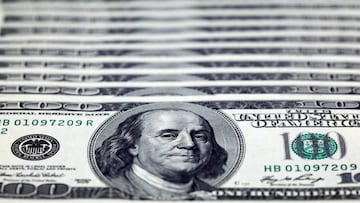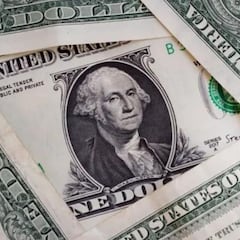Are the rumors of removing the $100 bills from circulation true?
Currently the highest denomination of US currency that the government issues is the $100 bill, which some have advocated retiring from circulation.

While most of us don’t see one, there are more $100 bills in circulation than there are $1 bills. According to the Federal Reserve Board, there were 4.4 million more of the former at the end of 2023. The total of the two combined make up over 60 percent of US banknotes in circulation. While the one-dollar bill has an average lifespan of roughly 6.6 years according to the Federal Reserve, a $100 bill can last almost 23 years.
Most of the $100 bills that exist, nearly 80 percent, are overseas according to a paper by the Federal Reserve Bank of Chicago in 2018. Mind you that at the same time, more than 60 percent of US currency was held by individuals in other countries. Keeping US currency, especially $100 bills is a way for people in developing countries to protect their life savings against swings in their own local currency and bank collapses.
However, higher denominations also make it easier to carry large sums of money and are thus used by criminal elements to traffic drugs, people and stolen merchandise as well as evade taxes.
Are the rumors of removing the $100 bills from circulation true?
The debate over whether it is sensible to maintain the $100 bill has been going on for several years now, that goes for the $50 bill too. However, there doesn’t seem to be any intent at the moment to yank the largest United States currency denomination still issued, nor the $50, from circulation. In fact, there are plans to bring out a new design for the $100 in 2034 a little more than three decades after the last time it got a security upgrade, and the $50 in 2028.
That still hasn’t stopped Ken Rogoff, a Havard University economist, and others from continuing to advocate for removing both the $50 and $100 bills from circulation. On the one hand it would make it much less convenient to move around vast sums of money which would make committing crime more expensive. This view was presented in a 2016 paper from Harvard’s Mossavar-Rahmani Center for Business and Government entitled ‘Making it Harder for the Bad Guys: The Case for Eliminating High Denomination Notes’ by Peter Sands.
It would also bring the benefit of making it easier for the Federal Reserve to use negative interest rates to help the economy rebound during an economic crisis. In such scenarios it actually costs people to hold onto money in the bank. But such measures would trigger cash hoarding impulses by those who have a lot of money stored in the bank, who would then withdraw their money to keep it in cash.
They would most likely prefer large denominations. Thus, money would be sapped out of the economy, and banks, which would cause the economy to collapse. “We’re not looking to get grandma getting a negative interest rate,” Rogoff told NPR in 2020.
“What we’re really looking at is financial firms, pension funds, insurance companies ... holding tens of billions of dollars. And we don’t want them bailing out of the system, storing their money in cash in a mountain in Pennsylvania,” he explained.
However, even if $100 bills were pulled out of circulation, they would still be legal tender just like the $500, $1,000, $5,000 and $10,000, even the $100,000 bill. But be aware that private businesses are not mandated to take them, unless there is a specific state law says the Federal Reserve.
These higher denominations were issued until 1969 and were mainly used by banking institutions. While they are still in circulation, the Bureau of Engraving and Printing says those that are “are probably in the hands of private numismatic dealers and collectors.”
Related stories
Read more:
Seeing double? This one-cent coin could be worth over $100,000 and it could be in your pocket



Complete your personal details to comment